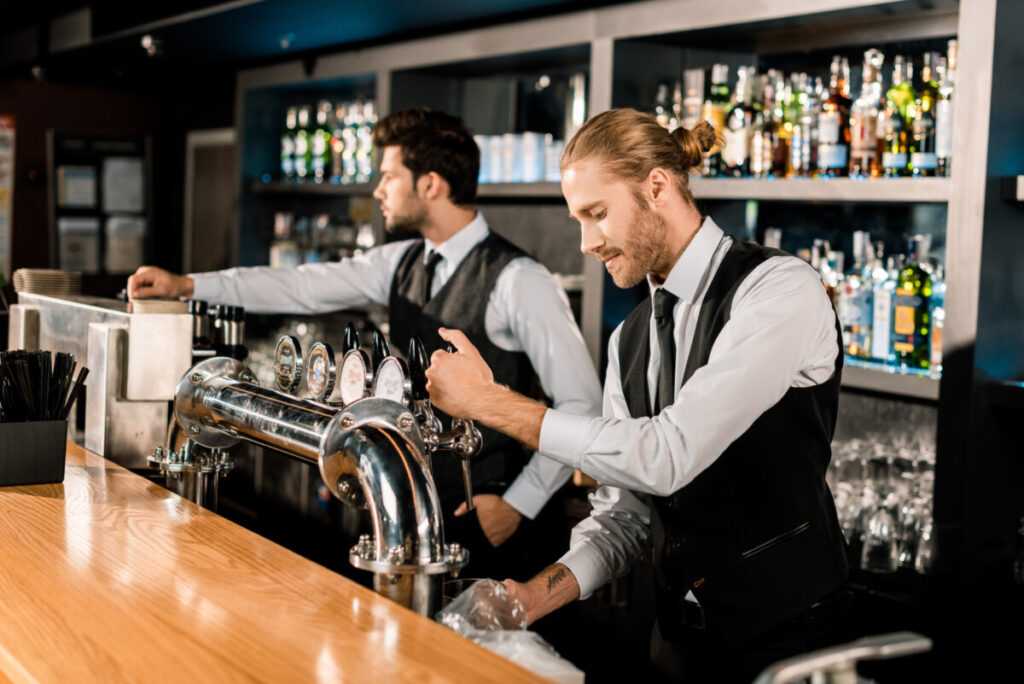With the continued pressures from the COVID-19 global pandemic, it has come to my attention that in the gay “Mecca” where I live, West Hollywood, California, that some popular and even iconic/historical gay bars are closing for good (to date, these include Gym Bar, Flaming Saddles, Rage (my first gay bar in LA in 1985!) and possibly Revolver (where I met my first, uh, trick). I was very disappointed to hear this, as this is on top of a discussion I have been reading about in the gay and mainstream presses about the need (or not ) for “gay bars” as such, that cater largely to the LGBT+ community, and were historically patronized by gay men in particular.
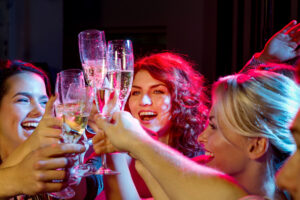
Even before COVID, American gay men have debated the fate of the “gay bar” in American cities where many bars were “overrun” with “bachelorette parties”, large groups of women celebrating a female peer’s impending nuptials by going out to party somewhere “safe” where they wouldn’t be accosted by straight men. However, many gay men saw this as invasion of gay male-specific “safe spaces”, where the women didn’t come to party “with” gay men as much as to party among themselves and gawk “at” the gay men, objectifying them the way many straight men objectify women.
With the passage of national marriage equality and protection from job discrimination by recent Supreme Court rulings in the United States, some people were questioning the need for “gay bars” as such, when nowadays everywhere could be considered “mixed” because of the blending of all genders and sexual orientations in a sea of broad acceptance.
Except, it’s not a sea of broad acceptance. Some would say it’s not even a puddle. Gay men in West Hollywood complain that the annual Halloween festival (not happening this year due to COVID-19) is the night of the year when the “invasion” by straight people makes it the night when one is mostly likely to hear “the other F-word” spoken. The similar appearance of restaurants and now straight bars owned by Lisa Vanderpump of reality television fame lends more of a sense that the once “gay haven” of West Hollywood is now “mixed” with straight people assuming that “what’s mine is mine, and what’s yours is mine” with no real consideration that maybe LGBT people in general and gay men in particular might both need and want spaces of their own, when nothing but “straight” bars and clubs proliferate on the Sunset Strip just a few blocks north.
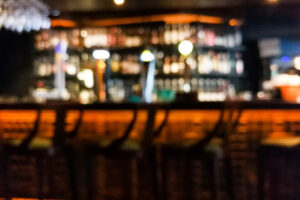
In cities big enough to support more than one LGBT establishment, like Los Angeles/West Hollywood, lesbians and gay men historically didn’t mix all that much. Lesbians, understandably, wanted their own safe spaces away from the omnipresent male domination, including gay men. Gay men wanted spaces to celebrate the masculine, including the hyper-masculine, such as leather bars like The Spike in West Hollywood or the Eagle (among others) farther east in Silverlake.
Gay men in other cities like New York, Atlanta, and London complained about the “bachelorette party” syndrome, in which the drunken, shrieking women were seen as an intrusion, as well as straight people assuming that historically-gay bars were just theirs for the taking because they promised a decent night of space, music, people, and a partying spirit.
However, when COVID-19 hit, the bars in all of Los Angeles County and many other cities across the state, country, and world were ordered to close. In Los Angeles County, this is still the case as of mid-September, 2020, with the odd exception that bars that serve food and sat customers at tables (however closely together) were exempt. The bars that didn’t have legal license to serve food or have room for tables were shut out, leading to no business revenue, no way to pay still-exorbitant rent, and imminent eviction from greedy landlords unwilling to negotiate compromises in the midst of economic disaster, and with a City Council and populace generally unwilling to fight those conditions to keep their present-day recreational spaces, which were simultaneously their historic cultural spaces of great significance to the LGBT community.
The gay scene in West Hollywood, as well as other cites, is dying not with a bang, but with a drawn-out wimper from a poisonous cocktail of gentrification, “hetero-fication”, COVID-19 moratoria, and pure greed where the spaces literally go to the highest commercial bidder, whatever kind of business that might be, with exorbitant rent in a cherished-but-still-run-down urban setting.
The tragic implications of this are still too new to be fully comprehended in a population just trying to survive severe economic recession and prevent death from a deadly virus, in a country where nearly 200,000 deaths have been determined to be largely preventable had U.S. President Trump acted sooner on information he knew the virus to be lethal on a large scale.

But after COVID-19 is somehow vanquished with a vaccine or effective, affordable, accessible treatment (that’s a tall order right now), we will still be left with the urban blight of dead, hollowed-out, boarded-up spaces that used to be our thriving gay stomping (or at least dancing) grounds for decades, going back to the heady days after Stonewall and before the height of HIV/AIDS.
And beyond just “venues to drink and party at”, which could be dismissed as superficial, their meaning to the young adult gay male who has just gotten off the bus in LA after being kicked out of his home in his Family of Origin’s home town for being gay cannot be underestimated. Time after time, for thousands, these gay men (and other LGBT folks) found respite, solace, sanctuary, and a haven away from obnoxious heterosexual privilege to downright anti-gay violence in these hallowed spaces. They were more than just a place to buy an overpriced drink after paying a chunky door cover; they were spaces that took one out of the cold, heterosexist real world and into a world where LGBT people could be in the majority for a change.
HISTORY AND PRESENT
As a therapist, I know well the lasting and lingering effects of trauma. Growing up in an anti-gay household, church, school, and community for about 18 years apiece and then having the opportunity to escape all that into a noisy, crowded, music-filled, good old-fashioned gay bar is like a new lease on life. It’s fighting back against all that oppression and being free to drink (hopefully in moderation), dance, flirt, and hook up after years of soul-crushing oppression.

Gay safe spaces can be bars, clubs, “circuit parties” (an increasingly obsolete and frankly pejorative term), organizational clubs, sports teams, arts groups, or political groups. But they are still very necessary, if only to combat the oppression that is still very much alive in Trump’s America, where the majority of the president’s cabinet are people whose anti-gay activities have a long and well-documented history (he has since appointed one openly gay cabinet member while continuing to roll back LGBT rights), starting with Vice President Mike Pence and continuing through most or all of the Cabinet Secretaries and Supreme Court confirmations, as well as various appointees from judges to ambassadors to White House spokespeople (especially Sarah Huckabee Sanders, the vile vermin spawn of her father, former Governor Mike Huckabee, a leader in anti-gay politics). Claims that the Trump Administration is somehow “pro-gay” ring hollow to anyone who bothers investigating the record of this administration. Hate crimes of all kinds (including against LGBT Americans) are up in this administration. Trump’s supporters are visible, vocal, and increasingly aggressive about their anti-LGBT sentiment.
Throughout history, gay men across the world have needed spaces of their own, somewhere to serve as an oasis of acceptance in an otherwise hostile milieu. George Chauncey’s book, Gay New York, described some of this history in New York City. Gay men have used “codes” from green carnations in the lapel, to colored hankies, even to flannel shirts and mustaches to subtly signal to other guys that they were available. Gay bars run by the Mafia were prolific in the 1960’s New York. Certain bars, restaurants, hotels, and other establishments found their place in cities across the world in a clandestine network of places to meet. For a long time, gay bars had opaque glass windows so no one from the street could see inside them (including West Hollywood’s Four Star, the current site of Micky’s). Now, the open windows and patios are maybe a little “too inviting”, sending a message that “anyone” is allowed in, including those who do not particularly like or respect the gay male community.
TRUE EQUALITY?
However, gay spaces have not been without their flaws. Many critics would say that the gay bars in West Hollywood have a shameful history of having a “hierarchy” that is as insidious as it is (mostly) unspoken, including racism (particularly against Black and Latinx), ageism (where that counts as anyone over the age of about, oh, 30), and “appearance privilege”, where guys are not “traditionally” handsome or guys who are heavier weight can be made to feel unwelcome, which really flies in the face of the purported “commitment to diversity” that gay bars can mean. Sometimes safe spaces for gay men have meant that lesbians have been made to feel unwelcome, in its own kind of sexism. So, “safe spaces for gay men” can include the argument that no “gay men” should be excluded, regardless of body, appearance, age, weight, color, etc., but whether these spaces should also “welcome” lesbians, trans women, trans men, straight men, or straight women, is debatable. The problem with “open to all” is that the original POINT of having a “gay bar” is lost; it becomes just “a bar”, and that can be found just about anywhere; it’s the majority. The problem is when the SPECIFIC needs of gay men to have their own safe spaces to congregate becomes obliterated by the assumption of heterosexual privilege, or that somehow gay men “don’t deserve” spaces of their own because they already have “male privilege” and don’t need any other favors. The problem is, we DO. There is reason that spaces that specifically cater to gay men exist, and if you don’t see the value in that, you’re not a gay man.
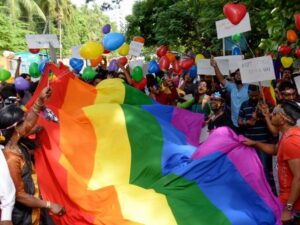
So, yes, we do need our “gay safe spaces”, free of not only anti-gay prejudice, intolerance, and violence, but also as examples to gay men worldwide who don’t have any opportunity at all for gay safe spaces that are commercial venues, especially throughout the Arab world, where being gay is (and has been) punishable by death, all perfectly legal in the Muslim/Sharia Law governments such as Iran, Saudi Arabia, Yemen, Qatar, United Arab Emirates, and parts of Indonesia and many African countries. But make no mistake: the American Evangelicals, Jehovah’s Witnesses, Southern Baptists, Orthodox Jews, Conservative Catholics, and Scientologists would all enact capital punishment for LGBT people if they had sufficient political power and legislative influence. Some of these groups in America are trying to aid other countries to enact “kill the gays” bills and support anti-LGBT legislation in the hopes that as the rest of the world increases its influence and ability to oppress LGBT people in general and gay men in particular in everything from job/housing discrimination to systematic government-sanctioned extermination, that they could “bring it on home” to the United States.
For gay men in those countries, the spirit of resistance still creates safe spaces in private parties, “showing up” in certain bars or restaurants, or forming groups in resorts. You can’t keep a good queen down when there is diva music playing somewhere. But in 2020, it’s tragic that gay men have to hide anywhere in the world. Our world can never call itself humane or just as long as that is the case. And like the spirit of Stonewall, gay men and other LGBT people continue to press on for legal and social rights.
GAY SPACES ARE WHERE YOU MAKE THEM
Gay “safe spaces” can be created anywhere. For decades, we tended to think of them as gay bars or clubs, and whether they were underground, Mafia-run speakeasies, or modern clubs with laser light effects and fog machines on dance floors, back rooms or sex clubs, a gay-affirmative space can be where any gay men congregate to celebrate, support, challenge, entertain, connect, and share a common humanity. In places were gay bars are just few or even illegal, gay safe spaces can be created out of nothing anywhere there is congregation. There is some biblical passage (I’m not religious so I can’t really quote chapter-and-verse) that says something to the effect of “wherever there are two or more gathered in His name, there is love.” Well, we can say this about gay spaces, too. We need these spaces as an alternative to a hard day’s work, as an alternative to all kind of heterosexist oppression, and as places to celebrate not only that we live but also how we live. Wherever you are, it’s up to you to create, preserve, sustain, expand, and celebrate gay spaces, from whatever they were before, to however they manifest now, to however these spaces evolve in the future. But as long as there are gay men, we need those specific spaces to reflect, validate, and celebrate sharing who we are. And greedy landlords and economic pressures from global pandemics be damned.
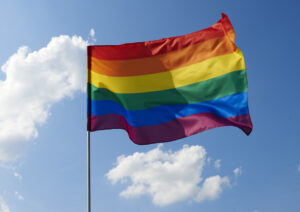
So when the smoke clears from the Los Angeles skyline, with its pervasive orange fog from forest-fire smoke, we are currently left with a rapidly-diminishing availability of gay safe spaces. And whether it’s the greed of vile landlords, the invasion of the bridesmaids, overall complacency, or the final victory of those who have wanted gay men to become increasingly invisible in the new Fascist America, it’s a tragedy, made all the worse in knowing, without equivocation, that it was ALL PREVENTABLE.
So, wherever you are, don’t let the bigots and the people who frankly wish we would either blend in to the populace and go away that way, or go away some other way, we resist the efforts to erase our existence by not only being visible, but also by gathering. Take a stand, take pride, and RISE UP!
For more information on therapy for gay men and other services at GayTherapyLA.com, from Ken Howard, LCSW, or his associate clinicians, including individual therapy, couples therapy, sex therapy, or life/career/relationship coaching (worldwide), email Ken@GayTherapyLA.com or text 310-339-5778 for more information or to book an appointment.

